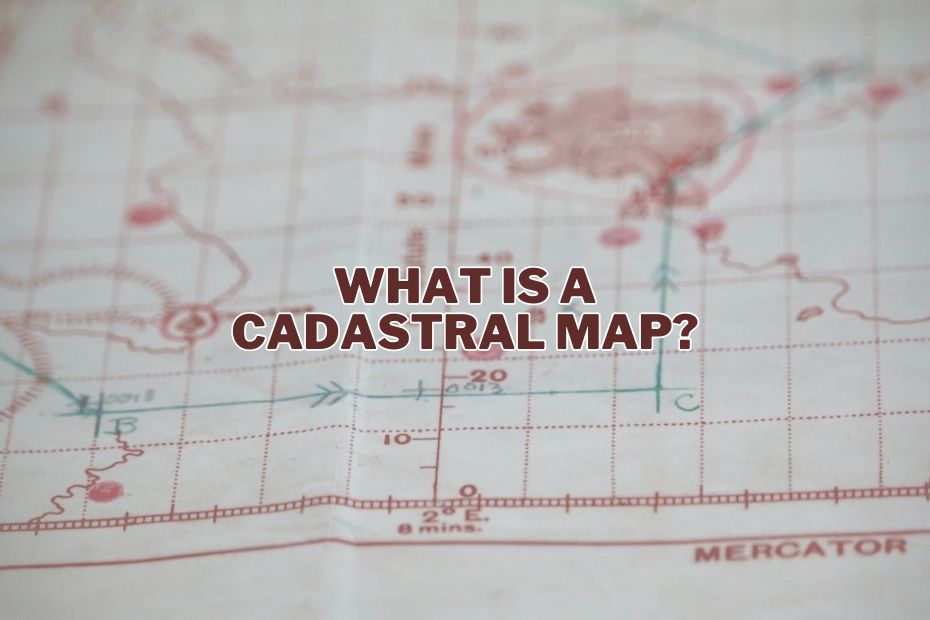In the realm of land administration and management, cadastral maps play a pivotal role. Whether you’re a real estate developer, a government official, or simply a curious individual, understanding what is a cadastral map and how they function is invaluable. In this guide, we’ll delve deep into the realm of cadastral maps, exploring their definition, uses, and significance in various industries.
Cadastral maps are specialized maps that provide detailed information about land within a certain area. These maps are crucial for understanding property boundaries, sizes, and uses. They serve as a vital tool for governments, land surveyors, property developers, and individuals interested in land ownership and use.
What is a Cadastral Map?
At its core, a cadastral map is a detailed representation of land parcels, boundaries, and other pertinent information related to land ownership and management within a specific geographic area.
These maps provide a visual depiction of property boundaries, dimensions, and often include additional data such as ownership details, land use classifications, and legal descriptions.
Cadastral maps serve as a foundational tool for land administration, facilitating accurate record-keeping, property taxation, urban planning, and resource management. They are utilized by various stakeholders, including government agencies, surveyors, real estate professionals, and landowners, to ensure effective land governance and sustainable development.
The Evolution of Cadastral Maps
Historically, cadastral maps were created and maintained on paper. However, with the advent of digital technology, these maps have evolved. Modern cadastral maps are often part of sophisticated Geographic Information Systems (GIS), making them more accessible and easier to update.
Components of a Cadastral Map
Cadastral maps consist of several key components:
1. Land Parcels
A fundamental component of cadastral maps is the representation of land parcels. These are individually numbered or marked sections of land, each with its own set of detailed information such as size, owner, and land use.
2. Boundaries and Measurements
Accurate boundaries and measurements are essential for cadastral maps. They provide the precise dimensions of land parcels, including their borders and any relevant natural or man-made features that define these boundaries.
3. Land Use Information
Cadastral maps also include information about the designated use of land parcels, whether for residential, commercial, agricultural, or recreational purposes. This helps in planning and zoning decisions by local governments.
The Importance of Cadastral Maps
The significance of cadastral maps cannot be overstated, as they form the cornerstone of land tenure systems worldwide. Here are some key reasons why cadastral maps are essential:
1. Property Identification and Documentation
Cadastral maps provide a means to accurately identify and document individual land parcels within a jurisdiction. By clearly delineating property boundaries and ownership details, these maps help prevent boundary disputes and ensure secure land tenure.
2. Land Management and Planning
For urban planners and policymakers, cadastral maps are indispensable tools for land management and spatial planning. They enable authorities to make informed decisions regarding zoning regulations, infrastructure development, and environmental conservation.
3. Real Estate Transactions
In the realm of real estate, cadastral maps play a crucial role in facilitating property transactions. Buyers, sellers, and real estate agents rely on these maps to verify property boundaries, assess land value, and conduct due diligence prior to purchasing or selling land.
4. Resource Allocation and Development
Cadastral maps aid in the efficient allocation and utilization of natural resources, such as agricultural land, forests, and water bodies. By providing a clear understanding of land ownership patterns, these maps support sustainable resource management and economic development initiatives.
Creating and Maintaining Cadastral Maps
The process of creating cadastral maps typically involves a combination of surveying techniques, geospatial technologies, and cadastral systems. Here’s an overview of the steps involved:
Surveying and Mapping Techniques
The creation of cadastral maps involves detailed surveying and mapping techniques. Land surveyors use a combination of traditional surveying tools and modern technology, such as GPS and drones, to capture accurate land details.
Updating Cadastral Maps
Keeping cadastral maps up-to-date is essential, especially in rapidly changing urban areas. Regular updates ensure that the maps accurately reflect current land uses, ownership, and boundaries.
Challenges In Cadastral Mapping
Cadastral mapping faces several challenges, including dealing with incomplete historical records, resolving boundary disputes, and adapting to changes in land use. Overcoming these challenges requires ongoing effort and collaboration among various stakeholders.
The Future of Cadastral Mapping
As technology continues to advance, the future of cadastral mapping looks promising. Innovations such as drones, satellite imagery, and blockchain technology are revolutionizing the way cadastral data is collected, managed, and accessed. These advancements hold the potential to enhance the accuracy, transparency, and accessibility of cadastral information, paving the way for more efficient land administration systems globally.
Conclusion
Cadastral maps are indispensable tools in land management, urban planning, and environmental conservation. By providing detailed information on land parcels, boundaries, and uses, these maps facilitate informed decision-making and contribute to sustainable development. As technology continues to evolve, so too will the capabilities and applications of cadastral maps, ensuring their relevance and importance in managing the world’s land resources.
FAQs: What is a Cadastral Map?
What is the main purpose of a cadastral map?
The main purpose of a cadastral map is to provide a detailed record of land parcels, including their boundaries, sizes, and ownership, for legal, governmental, and economic purposes.
How do cadastral maps benefit urban planning?
Cadastral maps aid urban planners by providing detailed information on land use, ownership, and boundaries, which is essential for infrastructure development, resource allocation, and efficient city planning.
Can the public access cadastral maps?
Yes, in many jurisdictions, cadastral maps are accessible to the public, often through governmental websites or local land registry offices.
How are cadastral maps updated?
Cadastral maps are updated through land surveys, legal changes in ownership, and technological tools like GIS, which allow for accurate and timely updates.
What is the difference between a cadastral map and a topographic map?
A cadastral map focuses on land parcels, ownership, and boundaries, while a topographic map details the physical features of the terrain, including elevations and natural formations.
